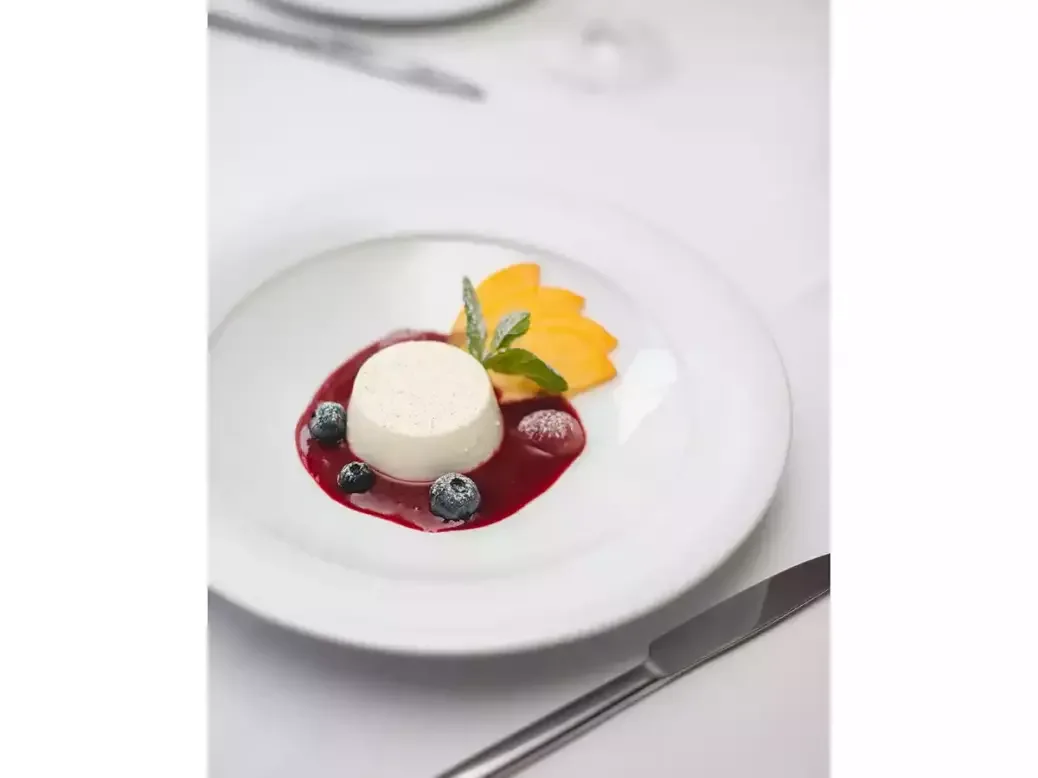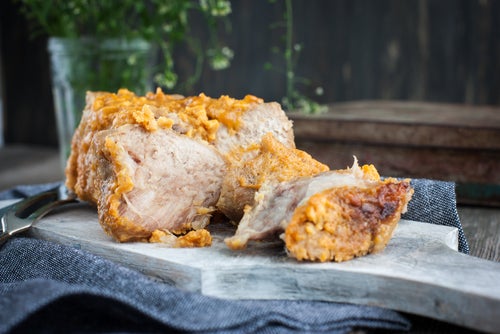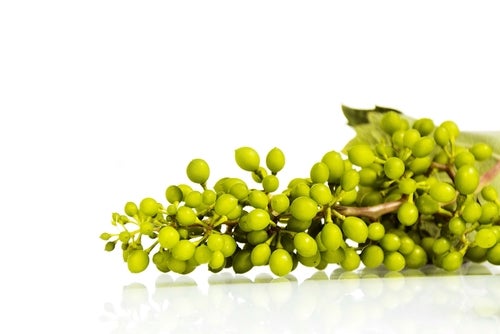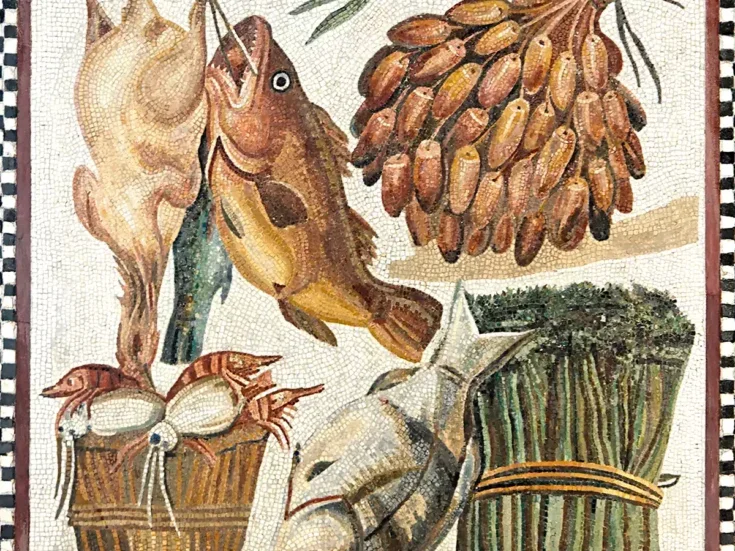
Much as I like the description of panna cotta as mere blancmange with a fancy accent, it really isn’t true. Panna cotta is made from sweetened cream set to perfect wobbliness with gelatine. Traditional English-style blancmange (just try finding a French recipe) is made from sweetened milk thickened with corn flour (corn starch). It’s much less rich in flavor and less silky smooth in texture than panna cotta—and thus much more suitable for the generations of children for whom it was a staple “nursery pudding” (or for whom it was a nursery affliction).
Panna cotta is even less like junket. An equally dreaded pudding of my childhood, junket is sweetened milk set with rennet to produce a jelly-like texture—wobbly at best, rubber-ball like on a bad day. Happily the lurid colorings and flavorings of junket and blancmange are irrelevant to this article, but I have not yet finished on the subject of what panna cotta is not.
It’s frequently likened to the heated-milk puddings of other countries, of which there are many. Among the oft-cited are Catalonia’s menjar blanc and Portugal’s manjar branco, in both of which almonds are a key ingredient. Similarly, Brazil’s manjar branco and Puerto Rica’s tembleque are both made with coconut milk and often desiccated coconut. As for the 13th century Danish recipe Moss hwit, as with the colorings and flavorings of blancmange and junket I have been there and see no reason to take you there too.
A dish that panna cotta does resemble is Antonin Carême’s fromage bavarois in his book Le Patissier royal parisien (published in 1815). The main difference is that part of the cream is fromage à la Chantilly—whipped cream—incorporated as the warmed mixture of cream, sugar, vanilla, and isinglass cools and starts to set.
Why is it that panna cotta (which, entirely subjectively, I consider to be supreme) is constantly likened to the rest of the world’s milk-based puddings? Lack of history, I assume. Most of these milk puddings predate panna cotta, often by centuries.
There is a story, for which there seems to be no evidence, that it was created by a Hungarian woman in the Langhe area of Piedmont in the early 20th century, but it is generally credited to the celebrated chef Ettore Songia who put it on the menu of the restaurant I Tre Citroni in Cuneo (Piedmont) in the 1960s. Soon after, it began to appear in Italian cookbooks and by the end of the century it had planted itself firmly in the world’s food consciousness as a classic and traditional Italian dessert, specifically one of the Langhe region and one to which Michelin-starred chefs such as Enrico Crippa of the 3-starred Piazza Duomo in Alba have applied their own creative stamp.
Creativity aside, for the purist, panna cotta is cream, milk, sugar, and gelatine. Vanilla bean is a moot point but more recipes include it than don’t. Piedmont recipes sometimes include rum (I don’t know where that idea originates), while Anna Del Conte, in her Gastronomy of Italy, says: “The traditional panna cotta from Piedmont and Val d’Aosta is flavored with peach eau de vie.”
While the proportion of cream is generally considerably greater than that of whole milk, precise quantities vary with every recipe. This is partly because creams vary in their fat content. English recipes tend to specify double cream, while America uses heavy cream, which has a lower fat content. In fact, the fat content is very similar to English whipping cream and also to Italian panna fresca. Some recipes use English single cream (half the fat of whipping cream) and omit the milk. Most recipes fall in the two-to-one or three-to-one bracket.
Gelatine (or vegetarian agar agar) quantities vary too. I like to sail as close to the wind as I dare to get the wobbliest viable set. Use more for a less nail-biting experience.
The best wines to pair with panna cotta
The purist approach to serving panna cotta is that it should be ungarnished and unaccompanied, but most recipes suggest some kind of fruit accompaniment, often a berry coulis. Anything added obviously affects wine pairing.
At the Ceretto family’s Piazza Duomo, Enrico Crippa’s panna cotta Matisse is adorned with paper-thin squares of puréed fruit and vegetables (peas, for example) and the panna cotta is less rich than most, being made with 350g of cream to 270g of milk. When I dined there, it was served with a 2013 Moscato d’Asti, Ceretto’s Vignaiolo di Santo Stefano 2013, which also accompanied a zabaglione, sweet biscuits, and bonet (Piedmontese chocolate crème caramel).
The 11-year-old Moscato was intensely aromatic, honeyed with age, and vibrant with acidity and it made for a seamless contrasting pairing (Ceretto Barolo dinner, WFW 81). But it doesn’t have to be such a venerable Moscato, especially if you are serving panna cotta with fresh berries or a coulis that is not forcefully sweet and/or sharp. Michele Chiarlo Nivole is a simpler Moscato d’Asti, but its balance of sweetness, freshness, effervescence, and flavor (rose petal, fresh grapes, apricot, stem ginger) sails lightly through the creamy richness.
Another Piedmont wine that can perform a similar trick, but with a sunburst of fresh strawberry flavor (and color), is Brachetto d’Acqui, for example, Giacomo Bologna’s Braida.
On its own, or with a fruit accompaniment that isn’t overly assertive, panna cotta can show off a variety of fine, complex sweet wines, botrytis as well as non botrytis, and at differing levels of sweetness. Wines of some maturity tend to be more complementary than young wines.
Sauternes into its second decade is especially good with panna cotta. You may have your favorites, but it seems to me that you can’t go wrong with Château Suduiraut (and on almost any occasion, I might add), so you could choose almost any vintage. For now, I suggest 2007, 2009, or 2011, but you could go back to vintages such as 2003 and 2001—and very probably further. I say that because a surprise perfect-pairing recently was panna cotta with Château Les Justices 1985, a vintage of little botrytis and little reputation and yet this beautifully evolved Sauternes had the opulence of ripe apricots sprinkled with cardamom and orange-zest vitality.
To emphasize how varied the wines can be and how complementary the complexity of maturity is, another recent success was a 2004 Feiler-Artinger Ruster Ausbruch Pinot Cuvée (the blend is usually 60–65% Pinot Blanc with Chardonnay and Pinot Gris).
One notable wine I haven’t got along with is botrytis Riesling with panna cotta. All I can say is, wrong kind of acidity (like wrong kind of snow and wrong kind of leaves on the line on Britain’s railways), but you may find it works for you.






